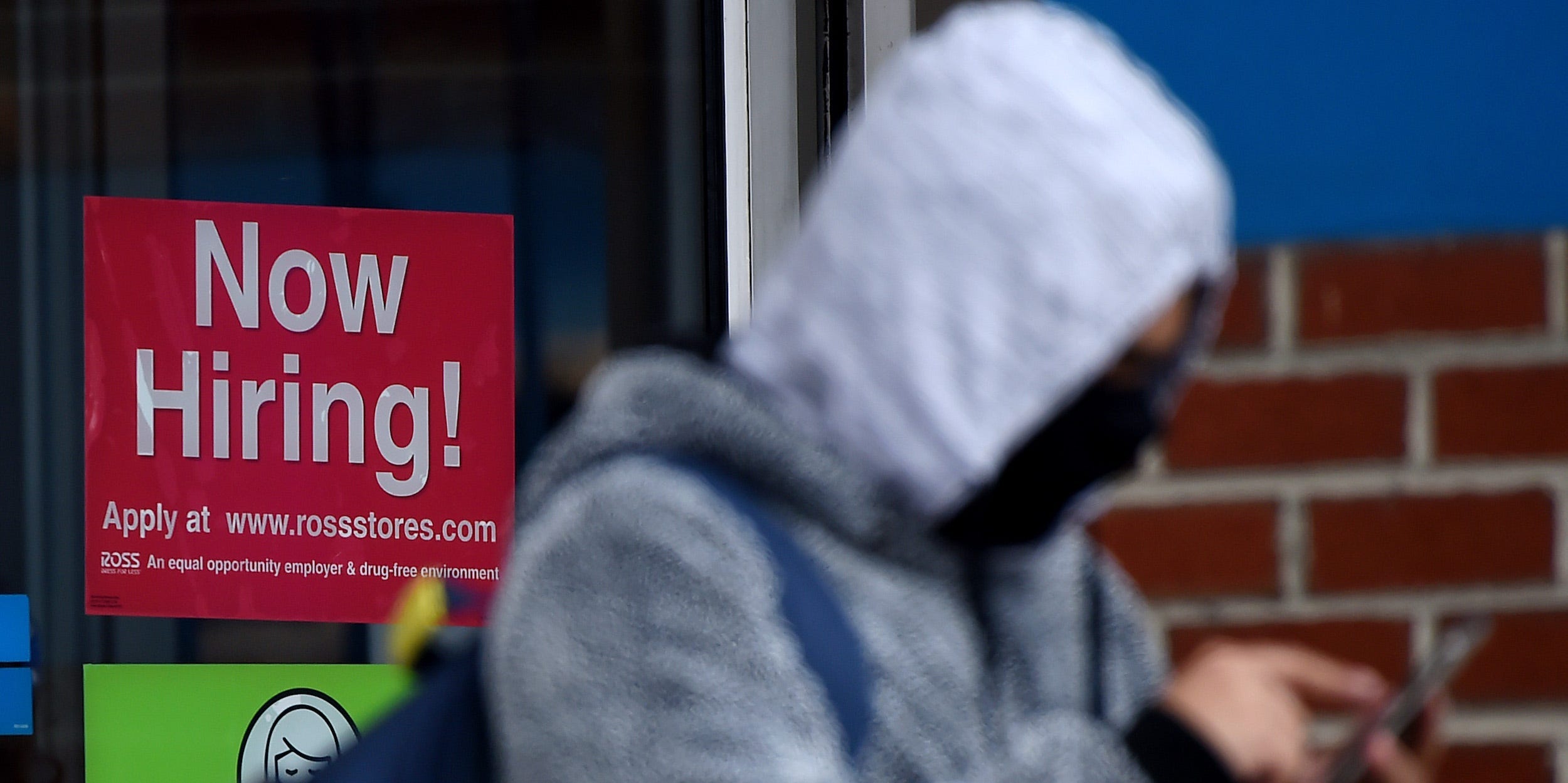
- Jefferies' chief economist missed April's job growth by 1.8 million, but she's still optimistic.
- Labor shortages had a bigger impact than expected but should soon fade, Aneta Markowska said.
- Other government and private-sector data point to a much stronger jobs recovery, she added.
- See more stories on Insider's business page.
Having the least-correct forecast for April payrolls isn't swaying Aneta Markowska, chief economist at Jefferies.
The US added just 266,000 payrolls last month, falling extremely short of the median economist estimate of 1 million jobs. Where experts were anticipating a strong pick-up in hiring through April, data suggests the easing of lockdowns did little to boost the labor market's recovery.
No economist was as bullish heading into Friday as Markowska, who estimated the country had added 2.1 million payrolls. The forecast was 700,000 payrolls higher than the next top estimate and would've marked the strongest rate of payroll growth since August. But the Jefferies economist told Insider that she's holding out hope the job gains expected last month will show up as the country reopens further.
"I'm not quite ready to throw in the towel yet," she told Insider. "The only questions are, was this really all pure noise, or was it due to labor shortages? And if it is labor shortages, how many months is it going to take for them to dissipate?"
Separately, Markowska wrote in a Friday note that it's "only a question of if, not when, employment catches up" to the rest of the economic recovery.
A few signs point to labor shortages being a bigger drag on the labor market than some expected. Wages grew sharply across several industries, and the workweek lengthened as Americans working part-time moved into full employment. But the shortage theory doesn't support the payroll declines in the retail, manufacturing, and transportation industries, nor does it explain why temporary layoffs rose throughout the month.
Businesses might be trying to time hiring just right, but as reopening continues, those pressures should only grow, the economist said.
"Are you going to just open half of your restaurant because you can't hire people, or are you just going to pay a little bit more to make sure that you attract workers?" Markowska added. "The alternative is losing market share, and that's a lot worse [than lifting wages]."
The other explanation for the April shortfall, apart from it being "pure noise," would be a lack of labor demand, but Markowska sees little reason to believe that. There's "overwhelming evidence" that businesses are trying to find people, she said.
With estimates for second-quarter GDP sitting at about 12%, payroll growth has to rebound to square with such broad growth, Markowska added. If productivity stays at its first-quarter level of about 4.5%, that GDP forecast implies payroll additions of 1.2 million in May and June, according to her calculations.
Time will tell whether the April read was noise or a sign the recovery faltered. The Friday data is preliminary and likely to be revised in the May report. And despite the latest figures sliding well below forecasts, other gauges of labor market recovery have shown promise. Weekly jobless claims fell to a new pandemic-era low in the first week of May, and data from firms including OpenTable, Kronos, and Homebase suggest hiring fared better in April than the government's report showed.
"There's just a wealth of information out there, and nothing in the data suggests this kind of a number," Markowska said, referring to the 266,000 payroll increase. "If there is an outlier, it's the payroll report. It just doesn't square with anything."
